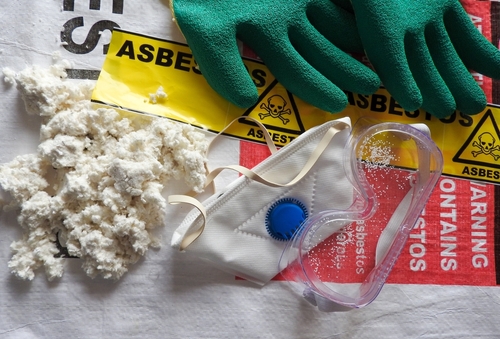Railroad workers face a higher risk of developing asbestos-related diseases due to exposure in their work environment, often without clear knowledge of when or where they came into contact with the harmful material. Asbestos-related diseases, such as mesothelioma and asbestosis, can take years or even decades to develop, and many workers may not remember specific instances of exposure. In these cases, workers may feel uncertain about how to pursue a claim for compensation or treatment.
If you’re a railroad worker who has been diagnosed with an asbestos illness, our team at Shapiro, Washburn & Sharp is here to help. We handle cases on a contingency-fee basis, meaning you won’t pay any legal fees unless we win your case. Contact us today at 833-997-1774 for a free consultation.
Can a Railroad Worker File a Claim Without Knowing When Or Where They Were Exposed to Asbestos?
A railroad worker can still file a claim even if they do not know the exact time or location of their asbestos exposure. Asbestos-related diseases, especially mesothelioma, are notoriously difficult to link to a specific exposure event.
The Federal Employers Liability Act (FELA) allows workers to file lawsuits for injuries caused by negligence, including asbestos-related diseases, even if the exposure cannot be precisely traced. Lawyers who specialize in FELA claims or asbestos litigation can help by investigating the worker’s history, their work environment, and potential exposure sites. Often, workers were exposed to asbestos in multiple locations, so it is not necessary to identify a single exposure event.
What Should a Railroad Worker Do If They Are Diagnosed with an Asbestos-Related Disease But Cannot Identify Their Exposure?
If a railroad worker is diagnosed with an asbestos-related disease but is unsure when or where they were exposed, they should begin by consulting with a lawyer who specializes in asbestos-related claims and railroad injuries.
Legal professionals can help investigate the worker’s employment history, the types of work they did, and the environments where they may have been exposed to asbestos. Even without specific knowledge of the exposure, there may be records, such as workplace safety reports or testimonies from coworkers, that can help establish the likelihood of exposure. Additionally, a medical expert may be able to provide insight into the disease’s development timeline and the potential sources of exposure.
How Can a Railroad Worker Prove Asbestos Exposure If They Cannot Remember the Exact Details?
Even if a railroad worker cannot recall the exact time or place of their asbestos exposure, they can still prove that exposure occurred through indirect evidence. Asbestos was commonly used in many materials aboard trains, in rail yards, and in repair shops, including insulation, brakes, and gaskets.
Lawyers and investigators can work with experts to establish that exposure is likely based on the worker’s specific job duties, the equipment they worked with, and the areas where they worked. Historical records and other testimonies may also be used to corroborate claims of widespread asbestos use in certain jobs and locations.
In many cases, workers do not need to pinpoint a single instance of exposure but rather demonstrate that exposure to asbestos was a foreseeable risk in their work environment.
What Are the Legal Options for a Railroad Worker with an Asbestos-Related Disease Who Cannot Identify Their Exposure?
Railroad workers with an asbestos-related disease who cannot identify the specific time or location of their exposure still have several legal options available. First, workers can pursue a claim under the Federal Employers Liability Act (FELA), which allows for compensation for injuries caused by the negligence of the employer, including exposure to hazardous materials like asbestos.
Many railroad workers with asbestos-related diseases have successfully filed lawsuits against manufacturers of asbestos-containing products. In these cases, workers do not need to know exactly where the exposure occurred but can rely on the fact that the use of asbestos in the railroad industry was widespread. Finally, some workers may be eligible for benefits through workers’ compensation, depending on state laws and the specifics of their case.
How Can Your Railroad Injury Law Firm Help?
Our law firm has represented hundreds of railroad workers since the 1980s, handling their FELA claims throughout the eastern U.S.A., and one of our firm’s attorneys co-wrote the treatise: “Railroad Health & Safety: A Litigator’s Guide,” found in most of the nation’s law libraries.
Contact Shapiro, Washburn & Sharp today at 833-997-1774 to schedule a free consultation with an experienced railroad asbestos attorney. Let us help you seek the justice and compensation you deserve.
